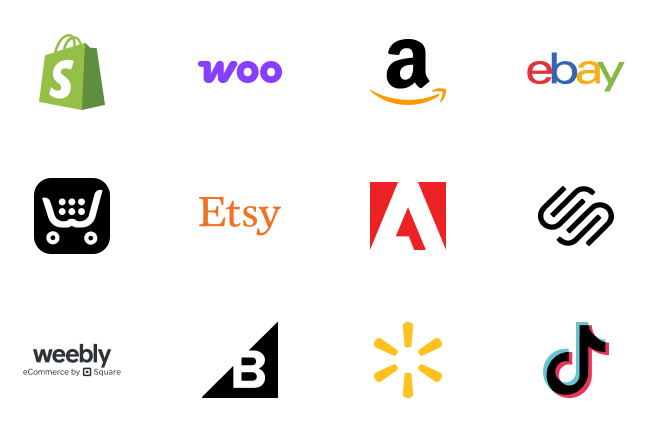Creating an optimized checkout process can significantly improve your conversion rates and reduce checkout abandonment. For example, checkout optimization can increase your conversions by nearly 36 percent, according to Sleeknote.
There’s a solid call to action to create an optimal user experience, especially if eCommerce websites want to stay relevant amongst competitors. For example, you’ll want to consider factors like offering live-chat support, providing multiple shipping options, and being transparent about delivery lead times.
In this blog, we’ll guide you through the best checkout process tips for your business so that you can create the ultimate user experience.
What Are the Steps of the Online Shopping Process?
The checkout process is a customer's steps to purchase a product in their shopping cart. Ideally, the best online checkout process will provide customers with a seamless user experience while reducing cart abandonment rates.
Most eCommerce sites follow these steps in the online checkout process:
- Add item to shopping cart
- Proceed to checkout
- Enter billing and shipping information
- Choose a preferred shipping method
- Enter information on the payments page
- Preview order details and complete the purchase
- Receive order confirmation via your email address
Generally speaking, eCommerce sites have the same steps in the checkout process, though some may differ slightly. For instance, some eCommerce businesses follow a single-page checkout process or a multi-process page process.
10 Best Checkout Flow Best Practices
One out of five online shoppers abandons their cart because of a complicated checkout process. Therefore, merchants should implement an easy checkout experience to reduce cart abandonment to avoid abandoned carts.
In fact, 39% of mobile users abandoned checkout because of the difficulty of entering personal information. Therefore, follow the below practices to create a frictionless checkout eCommerce experience.
1. Show checkout progress
Implementing a progress bar in your checkout process shows eCommerce shoppers the steps they need to take to complete checkout. Plus, implementing this design feature helps shoppers understand where they are at each step in the checkout flow process.
2. Don’t require shoppers to register before checkout
Offering guest checkout to customers helps speed up the checkout process by eliminating the tedious step of creating an account before finalizing the checkout. Sleeknote reports that being forced to create an account is the number-two reason people abandon their shopping carts.
Instead, consider allowing customers to create an account at the end of the checkout process. This way, customers can have a smooth checkout experience.
3. Provide live chat support
Offering customer support is one of the most critical ways to retain customers while boosting sales. Fifty-three percent of cart abandonment issues are because customers are unable to find answers to their questions, according to Freshworks. Live-chat support allows customers to ask any questions they may have before purchasing an item.
4. Be transparent about delivery lead time estimates
eCommerce shoppers want transparency when it comes to shipping lead times. If you’re not transparent with delivery lead time estimates, you increase your chances of cart abandonment. According to eConsultancy, nearly a quarter of online shoppers will abandon their online orders if there aren’t precise delivery estimates.
5. Provide ample payment options
There’s a wide variety of payment preferences in this day and age. Offering debit and credit card payments remains a popular option for shoppers. However, there are many other options you should consider using to reach a broader range of customers.
For instance, consider payment options such as PayPal, Afterpay, Klarna, Amazon Checkout, or mobile wallet options like Apple Pay. According to eMarketer stats, 81.1% of smartphone users in China prefer mobile payments, while 29% of US shoppers prefer this. So overall, the more options you offer, the more customers you can attract from all across the globe.
6. Ask card info last
eCommerce shoppers are more inclined to abandon their carts due to unexpected costs. To curb this issue, asking for card information should be one of the last steps of the checkout process. Once shoppers finalize their shipping options, shipping address, and other details, they'll be ready to complete their purchase.
7. Use visuals to simplify the checkout process
Including visuals in the checkout process helps convey vital shipping information more efficiently, rather than just plain text. For instance, including images of customers’ basket contents serves as a reminder of their items, rather than listing them as text.
Plus, visual images connect the checkout process page and the online store by showing the checkout page flows together. Remember, you want to create an optimal shopping experience, and utilizing visuals helps fulfill that need.
8. Follow-up with a confirmation email
No order is complete without a confirmation email. Confirmation emails solidify customers’ transactions to know the eCommerce retailer received their order. Confirmation emails should include estimated delivery lead time, billing address, shipping address, items ordered, and other information relevant to the order.
9. Offer multiple shipping options
Like offering numerous payment options, offering multiple shipping options is vital for your business. This shipping practice helps boost conversion rates while building customer loyalty. One study found that only 15% of US consumers say that their delivery speed expectations are met.
Fortunately, Easyship offers a seamless checkout process by showing users the cheapest, fastest, and best available shipping options. This way, consumers can have an optimal checkout experience while meeting their delivery experience.
10. Use address validation software
Address validation software helps provide an easy checkout experience by ensuring that all addresses are accurate and correct. For example, when a customer fills out their shipping address, address predictor tools help curb delivery issues.
Almost 1 in 3 customers say they abandon their shopping cart because of complications when filling out their shipping address. Luckily, Easyship offers address validating software that helps boost sales while preventing late deliveries.
Optimize Your eCommerce Checkout Process
By now, you should be well-equipped to create the best online checkout process for your eCommerce business. Creating an easy checkout flow helps boost conversion rates while earning the loyalty of your customers.
For any eCommerce business, it’s vital to make sure that your shipping strategy is well-established to create the ultimate user experience. With Easyship, you can gain instant access to a suite full of shipping tools to help establish an easy checkout process. In addition, by creating an Easyship account, you can implement tools for your shipping flow, such as:
- Optimized Store Checkout: Show the cheapest, fastest, and best value shipping options at your store’s checkout. This way, you can increase conversions while reducing cart abandonment.
- Easyship Branding Suite: Easyship helps create a delivery experience consistent with your brand. Send automated tracking emails to your customers so that the status of their shipment is just a click away.
Creating an optimized checkout flow doesn’t have to be hard for your eCommerce websites. So, by following these eCommerce checkout flow best practices, you can significantly help your business drive sales.
If you found this article informative, you may enjoy the following:















































.svg)
.svg)






.avif)
.avif)

.avif)
.avif)


.avif)


.avif)










.avif)
.avif)



.avif)
.avif)


.avif)
.avif)


.avif)



.webp)







.svg)





.webp)